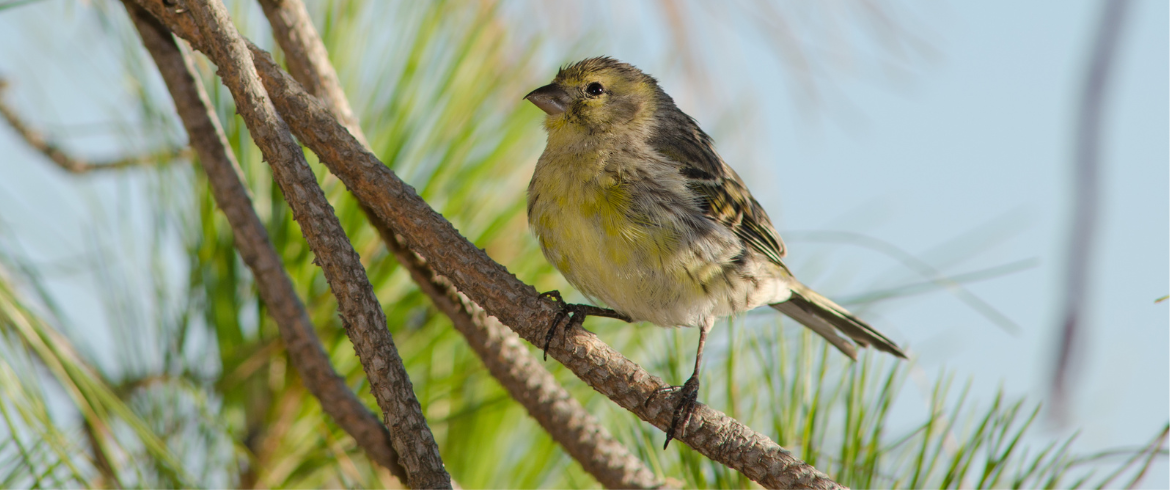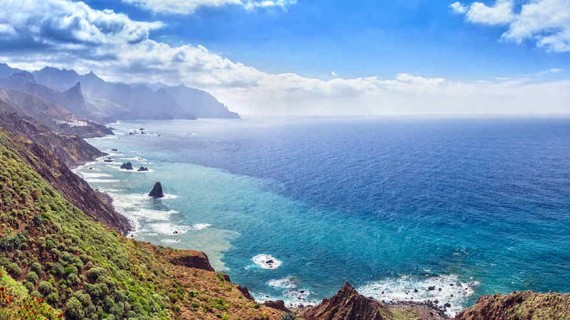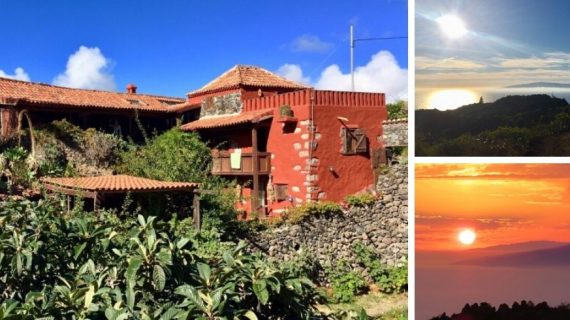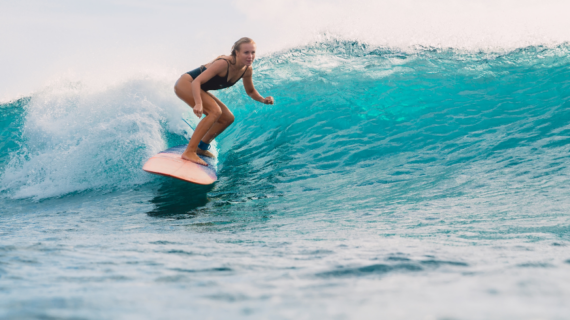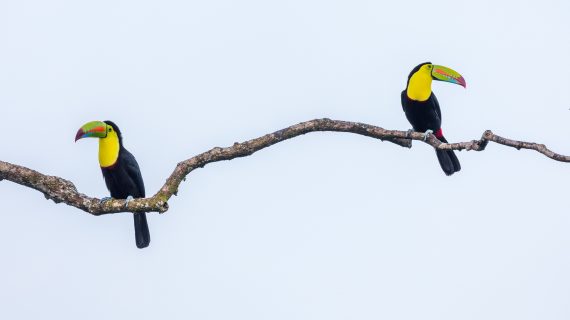In the heart of the Atlantic, off the coast of Africa, the Canary Islands are home to a surprising natural heritage rich in flora and fauna. Each island is a world of its own, with landscapes ranging from the golden dunes of Fuerteventura to the lush forests of La Gomera, from the breathtaking craters of the Teide to the wild cliffs of the Hierro. This archipelago is not only a tourist destination, but the Canaries are also a sanctuary of biodiversity where nature has evolved in isolation, giving life to rare and delicate forms of life. On this journey through flora and fauna, we will discover the endemic species that make the Canaries a unique natural treasure in the world.
The flora of the Canaries: plant creatures out of time
The vegetation of the Canary Islands is the result of millions of years of isolation and adaptation. In these islands, nature has created plants that seem to have come out of another world: thousand-year-old trees, spectacular blooms and forests from distant geological ages. Walking among these plants is not only an aesthetic experience, but a journey into the living history of the Earth.
The millenary dragon: the mystery of the draco dracaena
Dracaena Draco, known as the “dragon tree“, is one of the most surprising plants that can be found in the Canary Islands. It has a thick trunk, branches that look like arms raised to the sky and a really unique shape. Its red sap has fueled legends for centuries, and there is still something magical about seeing it live.
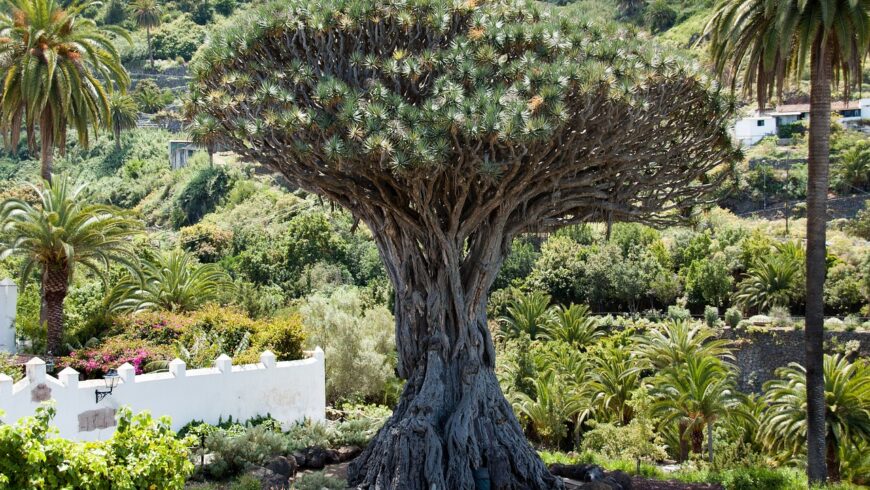
It grows slowly and can live for hundreds of years, as if the time for him passed more slowly. Today it is a symbol of Canarian nature and can be found especially in Tenerife and La Palma, where it resists the wind, sun and drought. It is as if in the middle of wild and rocky landscapes, this tree tells an ancient story, made of resistance and silence.
Tower of jewels: the extreme beauty of the Echium wildpretii
Between the lava rocks and the sunny slopes of the Teide, in spring a plant blooms that seems out of a dream. The Echium wildpretii, also called “jewel tower” grows tall and slender like a pink torch in the middle of the lunar landscape. Its small flowers shine in the sun and attract bees, butterflies and other pollinators, creating an explosion of life in the silence of the volcano.
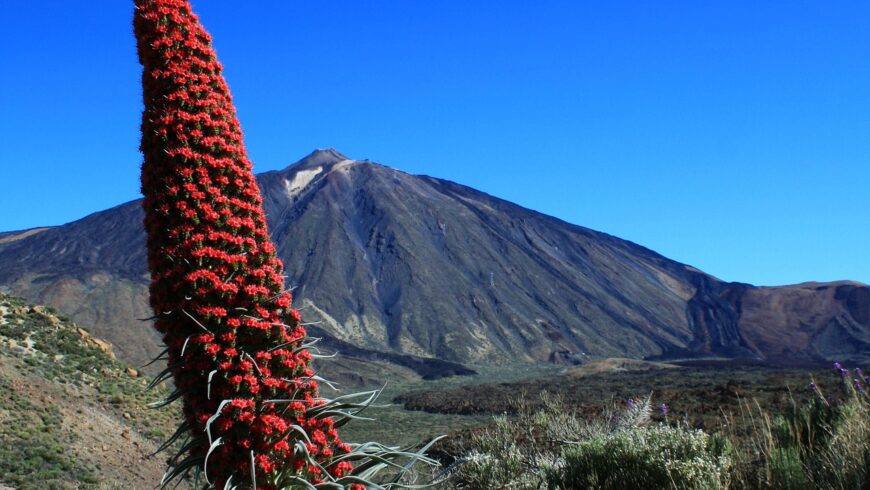
This plant blooms only once in a lifetime, after several years of growing silently, and then it dries out. It is an extreme and beautiful gesture, which tells the strength and fragility of the Canary nature. To admire it live is an experience that leaves its mark.
Laurisilva: the forest from the past
Hidden between the wettest mountains of Tenerife and La Gomera, laurisilva is a forest that seems to have come from another era. It is a type of vegetation that already existed millions of years ago, when the Earth’s climate was more humid and mild. Today, it survives only in a few corners of the world, and the Canaries are one of these special places.
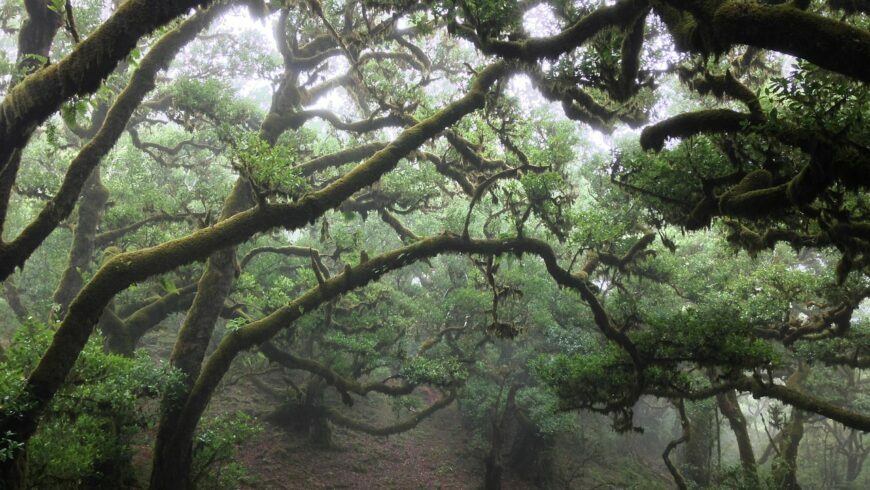
Walking in the laurisilva is an almost magical experience: the air is fresh and fragrant, the trees are covered with moss, and everything seems wrapped in a light fog. Here live ancient plants such as the Canary laurel, giant ferns and many species that do not exist elsewhere. It is a valuable and fragile ecosystem, reminding us how important it is to protect biodiversity.
Small wild worlds: the fauna of the Canaries
The nature of the Canaries is home to animals that, although often small and little known, tell incredible stories of adaptation and survival. In an environment shaped by the wind, the sun and silence they have found their space, evolving in unique ways. Getting to know them up close is a way of discovering the true soul of the archipelago, made up of biodiversity and wonder.
The wild canary: the voice of the archipelago
The small Serinus canaria is a small bird with yellow-green plumage and clear and melodious singing, which populates the natural landscapes of the Canaries. Although many think that the islands take their name from him, it is actually the opposite: it is the canary who has inherited the name from the archipelago.
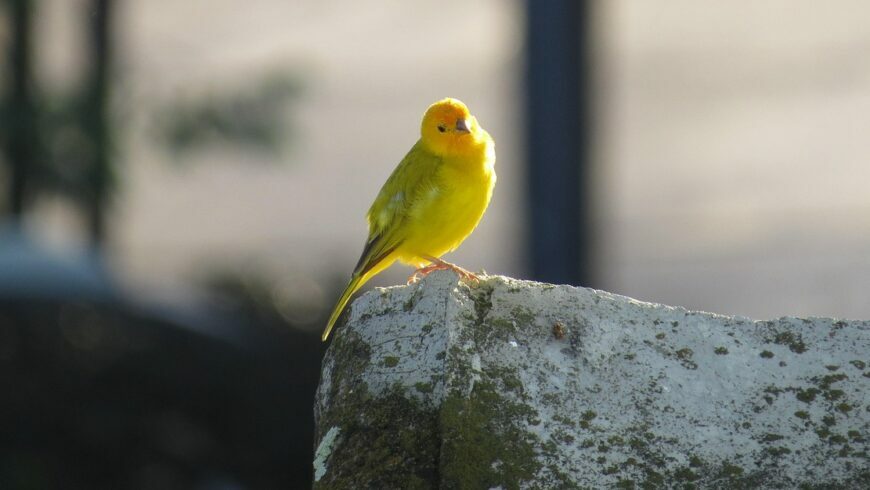
It lives free among bushes and trees, building the nest with care and filling the air with light notes. Unlike the caged canaries we know, here it flies between mountains and valleys, bringing a gentle music that seems to come directly from the earth.
The laurel dove: elegance hidden in the woods
Among the humid and fragrant branches of the laurel forests, one of the most fascinating creatures of the Canary Islands moves silently: the turque paloma. It is a dove with dark plumage, with blue and green reflections that you notice only if you look at it carefully. It lives almost exclusively in the ancient forests of Tenerife and La Gomera, where it feeds on the fruits of endemic trees and helps to spread seeds.
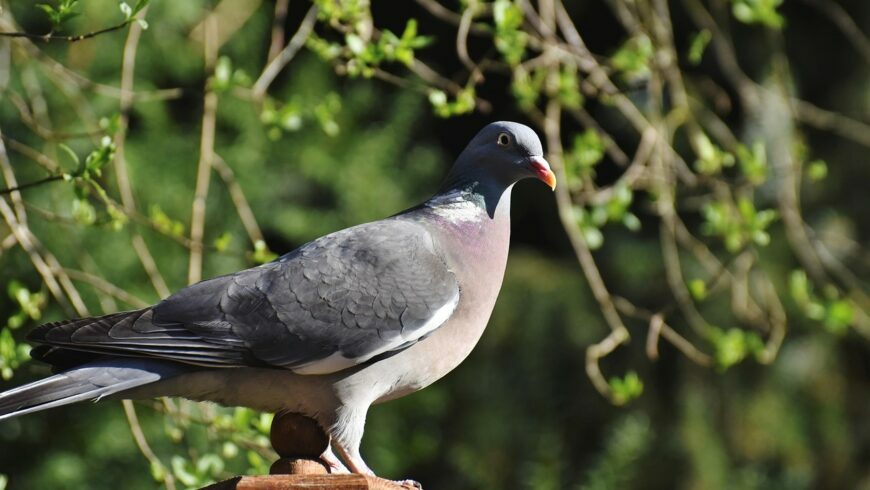
It is not easy to spot, but that’s why it is even more special: it is the symbol of the secret life that hides among the leaves, in a delicate and precious ecosystem. Its presence is a sign of the health of these ancient woods.
The giant lizard: the guardian of the rocks
With its robust body, dark scales and watchful eyes, the giant lizard looks like a small dinosaur that has crossed time. This lizard, endemic to the Canaries, lives among the sunny rocks of islands such as El Hierro and La Gomera, where it blends perfectly with the colours of the volcanic earth. Some species can exceed 30 cm in length and are among the rarest reptiles in Europe. For years it was feared that they would become extinct, but fortunately small groups have survived in isolated areas and are now being protected with great care. Seeing them running between the stones is a real privilege: they are the silent guardians of an ancient ecosystem, which surrounds us as every creature has an irreplaceable role in the biodiversity of the archipelago.
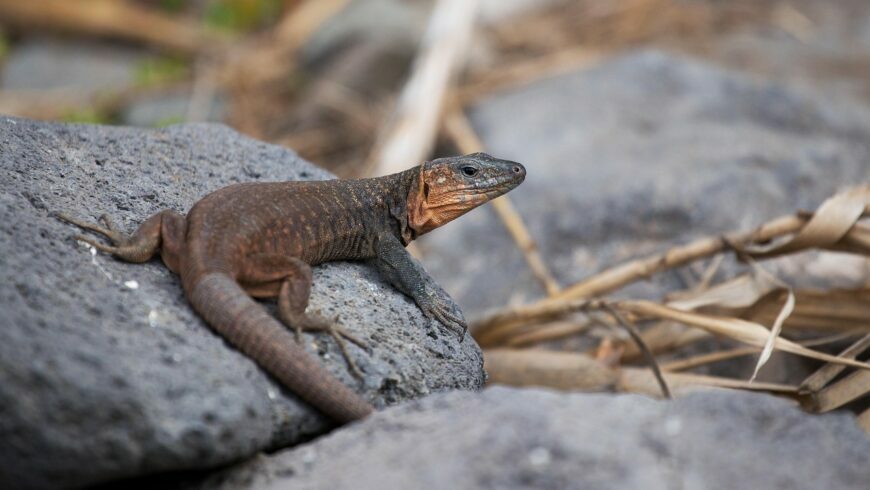
The flora and fauna of the Canary Islands are a treasure that is slowly revealed, walking between paths, observing with patience, being surprised by the silence and details. Each endemic plant, each unique animal, is the fruit of millions of years of evolution in balance with a special territory. Protecting the rich flora and fauna of the Canary Islands is not only an environmental duty, but also a way to reconnect with what is authentic and fragile.
